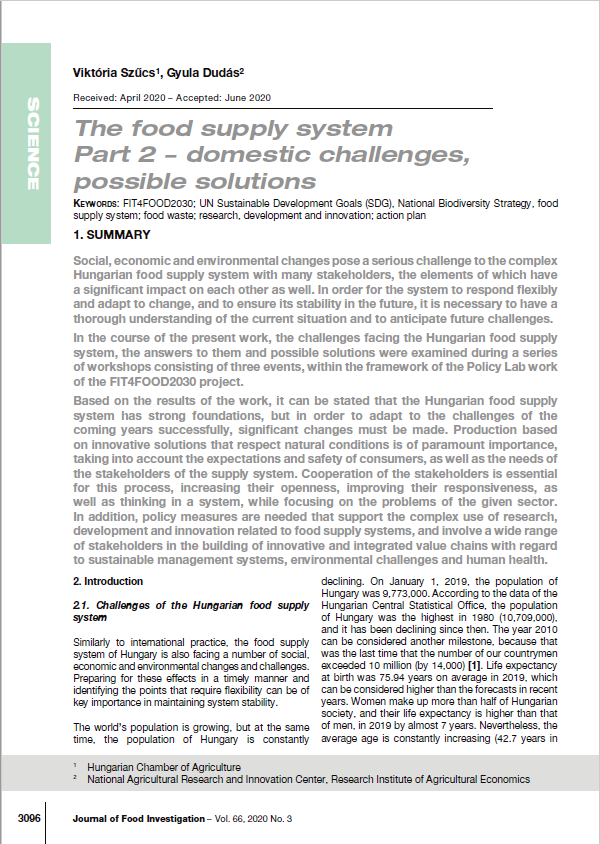
The Hungarian Policy Lab has published an article in the Journal of Food investigation. The article titled The food supply system Part 2 − domestic challenges, possible solutions is available in both Hungarian and English. It is a useful source of FIT4FOOD2030 activities and outcomes at the policy level.
After naming social, economic and environmental challenges of the Hungarian food supply, and two relevant strategies of the European Green Deal (Biodiversity Strategy and Farm to Fork Strategy), this article presents the process and results of the work of the „Policy Labs” in Hungary. The main objective of the Hungarian Policy Lab was to map the national food supply system, to designate action points and to develop a proposal to support the food system transformation, taking into account the priorities of FOOD 2030 and involving the stakeholders.
A thorough review of the system and an assessment of the situation are essential to be able to respond to the expected challenges and to adapt to domestic and EU strategies and recommendations. This paper points out that the Hungarian food supply system has many strengths on which to base the change, but also has a number of weaknesses, the strengthening of which is a task for the coming years.
The process was based on the FIT4FOOD2030 methodological solutions and consisted of three workshops in a form of focus group discussions. Each workshop was based on the previous one. The first workshop focused on defining strengths and weaknesses of the current food system, challenges until 2030, the role of research, development and innovation, and characterising the ideal Hungarian food system. The second workshop aimed to finalise the vision of the Hungarian food system in 2030 and explore different elements of the research, development and innovation which could support the realisation of the vision. Finally, the objective of the third workshop was to develop action plans to help realize the vision for the Hungarian food supply system for 2030.
